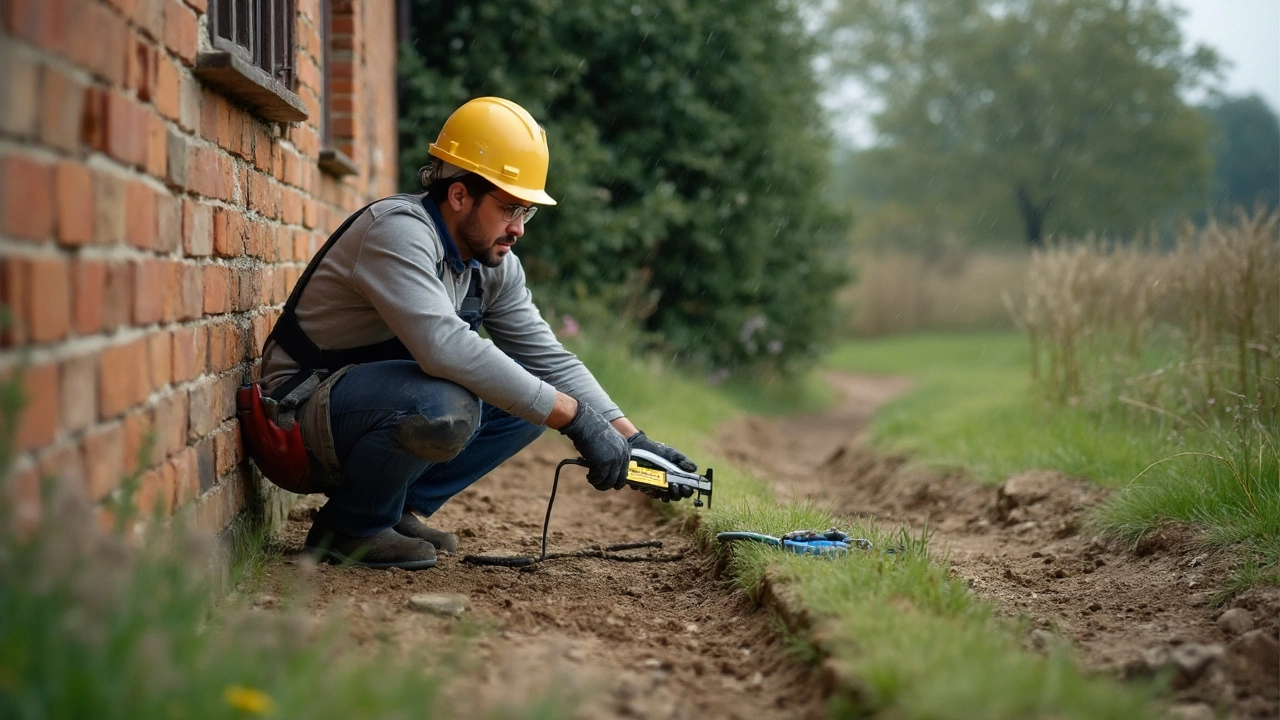Fixing a crack in a house foundation can vary in time depending on the size and severity of the crack. Minor fixes might be done in a day, while more severe cracks can require weeks of attention and careful work. It's crucial to consider the right repair methods and the expertise of the professionals involved. Safety and ensuring the integrity of the house are top priorities. With thorough assessment and planning, foundation repair can be managed efficiently.
House Crack Guide: What Causes Them and How to Fix Them
First thing’s first – not every line on your wall means disaster. Some cracks are just the house settling, others signal real structural trouble. Knowing the difference can save you money and keep your family safe.
Common reasons a house develops cracks
Most cracks start with movement. When the soil beneath your foundation expands or shrinks (think wet winters and dry summers), the slab shifts and the walls react. Poor drainage, tree roots, or a new addition that changes load distribution can also push the structure out of line. In older homes, the original building materials may have weakened over time, making cracks more likely.
Temperature changes play a part, too. Concrete and brick expand in heat and contract in cold. If there’s a gap or weak spot, the stress shows up as a hairline line.
How to tell a harmless crack from a serious one
Grab a flashlight and look closely. A "settlement" crack is usually diagonal, narrow (less than 1/4 inch), and appears near door frames or windows. It often stays the same width over months. A structural crack, on the other hand, is wider, runs vertically, and may widen over time. If you see zig‑zag patterns, bulging walls, or cracks that spread across a large area, call a professional right away.
Another quick test: place a ruler across the crack and mark the width. Re‑measure after a week. If it’s growing, you’ve got a problem.
DIY steps for small, non‑structural cracks
1. Clean the crack – use a brush to remove dust and loose material.
2. Apply a concrete patch or filler designed for interior walls. Push it in with a putty knife, smooth the surface, and let it cure per the product’s instructions.
3. Once dry, sand lightly and paint to match the surrounding area.
If the crack is in plaster, use a plaster repair kit. For wooden studs, fill the gap with wood filler, sand, and seal.
When to call in an expert
Don’t try to patch a crack that’s wider than 1/4 inch, keeps getting bigger, or is accompanied by doors that won’t close properly. Those signs point to foundation movement or moisture intrusion. A structural engineer or qualified builder can assess load‑bearing walls, check for water damage, and recommend proper underpinning or drainage solutions.
Professional repair often involves:
- Installing steel piers or concrete footings to stabilize the foundation.
- Improving soil drainage with French drains or grading adjustments.
- Sealing exterior walls and repairing roof leaks that let water seep in.
Preventing future cracks
Good maintenance goes a long way. Keep gutters clean, direct downspouts away from the foundation, and avoid planting large trees too close to the house. If you live in an area with expansive clay soil, consider a moisture‑control system that keeps the ground around your slab from fluctuating too much.
Regularly inspect your home after heavy rain or a long dry spell. Spotting a new crack early means you can act before it turns into a costly repair.
Bottom line: not every line on a wall is a catastrophe, but staying observant and knowing when to call a pro will protect your home’s value and your peace of mind.
